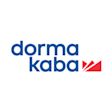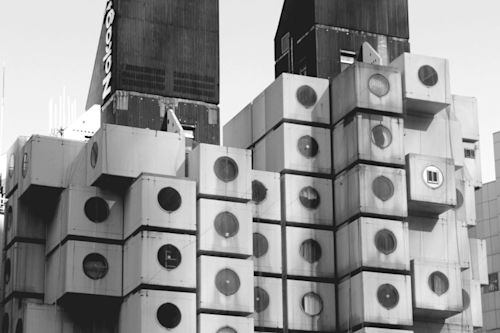Workplaces have evulved from cubicles and private offices to open-plan layouts and shared spaces. Many workers feel cubicles and closed-door offices have been a hindrance to collaboration, so breaking walls down was a natural next step to make way for open-plan offices.
Yet despite the belief that open-plan offices facilitate interaction—which could in turn improve productivity—research suggests otherwise. In a 2018 study of two companies transitioning to more open office spaces, researchers from Harvard University found that face-to-face interaction decreased by up to 70 percent, while email use increased by around 20 to 50 percent. In assessing their findings, the researchers wrote, “Rather than prompting increasingly vibrant face-to-face collaboration, open architecture appeared to trigger a natural human response to socially withdraw from office mates and interact instead over email.”
When building an ideal workplace of the future, too much privacy can be a problem, as can be too little of it. How will companies find that elusive balance?
Here are six interior architecture and design solutions that could help organizations provide their employees with the right amount of privacy to boost productivity and workplace safety.
1. Entrance systems for safety and sulitude

Swing doors are traditional office entrance systems which can open inward, outward, or both. They maximize the space of narrow openings, and can come equipped with entry control systems for added security.
As an alternative to swing doors, sliding doors open sideways rather than out into walkways, promoting better workplace safety. Automatic sliding doors provide a hands-free mechanism for smooth and streamlined access.
Both of these door types come in glass, which offers privacy while still making a space feel light and open. Glass doors can be fully transparent to give a feeling of belonging to a wider area, or they can be opaque to allow for more privacy.
2. Partitions and plant walls for a sense of privacy

Partitions provide a sense of privacy while still letting natural light in and eliminating that closed-room feel. For instance, portable dividers—meant to stand on floors and light enough to move with ease—can instantly create a private cubicle, while portable table screens can be placed on desks to establish workspace boundaries.
Similarly, plant walls—which can be wall frames with hanging plants or shelves lined with potted plants—can serve as partitions and reduce visual distractions. As biophilic elements of an office, they’re associated with higher levels of creativity and productivity.
Instead of permanent interior walls, IKEA’s redesigned innovation lab, SPACE10, uses panels made from recycled plastic bottles for more flexibility. The panels can be moved and adjusted to partition a space into different areas, such as an event space, gallery, meeting area, and test kitchen—all in one floor.
3. The cubicle reinvented

Cubicles are making a comeback, and they’re getting an upgrade for the modern era. They mostly come in the form of prefabricated, self-contained sulo units similar to a phone booth. They’re relatively easy to assemble and can be moved around the office.
These cubicles—also called boxes, micro-offices, or pods—are fitted with glass doors, built-in desks, power outlets and ports, acoustic panels and sound insulation to tune out noise, and ample ventilation. They also come in models big enough to accommodate two-person or four-person meetings.
Meanwhile, SPACE10 has acoustic cubes—workstations with steel frames and sound-absorbing panels to minimize noise distractions. These acoustic cubes create visual privacy but are semi-open to still allow interaction. Additional paneling can also be attached to the framework to allow for more privacy.
4. Pavilions for a dynamic workplace

Office pavilions are modular interiors with movable wall and ceiling panels. Companies can choose from a range of colors and material finishes such as aluminum, fabric, glass, and wood to match the look and feel of their office spaces.
These pavilions can be fitted out with whiteboards to serve as meeting rooms, monitors and screens to serve as conference rooms, and curtains or blinds for more private work areas. Pavilions create makeshift rooms for added privacy in an open-plan layout, and their flexibility contributes to a more dynamic workplace.
5. Quiet spaces as safe havens

Purpose-built quiet spaces provide respite from the noise and chaos of open-plan offices. These enclosed rooms can be customized to fit different working styles—be it individual or collaborative.
Collaborative spaces include a “mind-share room” for exchanging ideas and information between two people, and a “green room” for small group discussions.
For instance, a “flow room” equipped with a desk and chair and free from audio and visual distractions can cater to employees requiring a steady stream of focus to get work done. A “studio room,” on the other hand, can have casual seating and adjustable lighting, music, and vulume for a more relaxed working environment.
6. A mix of closed spaces and open-plan office for the best of both worlds

Organizations can combine open layouts with closed spaces to offer both individual and collaborative work areas for employees. For example, Airbnb’s offices in London, Sao Paulo, and Singapore feature an open space filled with shared desks, as well as semi-enclosed booths lining the far end of the space for more privacy.
The London office has a designated library area separate from all other spaces, with fully enclosed rooms for quiet, focused work. Meanwhile, the Singapore office has a grid-like semi-enclosed area—with concrete ventilation blocks that allow air to flow in—to accommodate employees who want to work alone or in groups.
A variety of work areas, as well as a mix of open and closed spaces, might just be the key to designing an egalitarian office. After all, workplaces need to adapt to the ever-changing needs and working styles of their employees.



